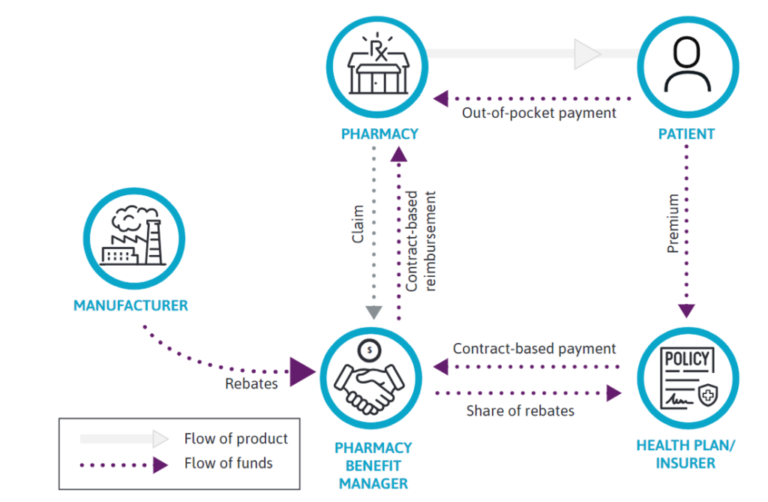Once again, the ongoing debate about the age women should begin annual breast screening is waging, as breast imaging radiologists, medical associations, and advocacy groups comment on the 2024 U.S. Preventive Services Task Force (USPSTF) recommendations for breast cancer screening. Their latest guidelines recommend that women should begin breast screening at age 40, a significant change from the 2015 USPSTF recommendations of starting at age 50.
In an editorial published in the Annals of Internal Medicine, Dr. Russell P. Harris, a former member of the USPSTF, argued that there was not enough scientific evidence to support the recommendation to begin screening at age 40. He claimed starting at 40 would result in additional false positives, unnecessary imaging, heightened anxiety for younger women, and even unwarranted biopsies, all while not measurably improving breast cancer detection rates:
“For women in their 40s, it means many more undergoing screening with a low probability of benefit and definite potential for harm.”
The American College of Radiology immediately refuted Dr. Harris’s argument and defended the studies that support the USPSTF recommendation:
“Screening only women ages 50–74 every other year may result in up to 10,000 additional, and unnecessary, breast cancer deaths.”
As a breast imaging specialist and long-standing national advocate for women’s health, I’ve read the arguments on both sides. I recognize that the data used to make these life-changing recommendations is decades old and presents challenges when establishing guidelines for all women. I also know that experts on both sides of the debate are marshaling arguments they believe are in the best interests of women.
However, as this debate spills into mainstream media, it will only further exacerbate the confusion surrounding mammography. My patients are already troubled by the federal mandatory warning telling 40 percent of them that they have dense breast tissue that may compromise the effectiveness of their mammogram. I fear the density warning and this debate over the starting age will discourage women from beginning annual screening entirely. I respectfully suggest it’s time we reframe the issue and agree to work together on a different approach: increase access to lifesaving screening, decrease anxiety surrounding screening, and incorporate the principles of precision medicine into our mammography guidelines. The way to do that is to leverage emerging AI technologies that can revolutionize breast imaging.
For years, I have advocated for the use of tomosynthesis (3D mammograms) and newly improved supplemental imaging (abbreviated MRI) to tailor breast cancer screening to the requirements of individual patients.
Not all women are alike. Many factors affect the risk of cancer: race, ethnicity, genetics, family history. A key variable is dense breast tissue, which to varying degrees affects nearly 40 percent of women. Density limits the sensitivity of mammography because dense breast tissue and suspicious masses both appear white on a mammogram. This makes detecting cancer in dense breast tissue like finding a needle in a haystack, and this is what often leads to many false positives and missed cancers. To make matters worse, extremely dense breast tissue is an independent risk factor for the development of breast cancer.
Rather than focus on the potential for false positives and keep women in their 40s away from mammograms, we can improve screening processes, detection, and treatment by embracing AI technology. AI can automatically triage screening cases, rapidly distinguish suspected tumors from surrounding healthy tissue, and, for the first time, go beyond the grayscale of mammograms, using color to reveal the contours of hidden masses in dense breast tissue. These same AI technologies can improve monitoring during therapeutic treatment, reducing the impact of disfiguring surgeries.
We must also systematically assess relative risk rather than funnel every woman into a system solely based on their age, implicitly assuming they all have the same risk of being diagnosed with cancer. As we continue to embrace AI and explore ways it can benefit our healthcare system, it’s time to recognize AI is not replacing us, it’s enhancing our workflow and care.
We should use AI to develop recommendations for breast cancer screening protocols based on quantified risk, factoring in family history, ethnicity, genetics, and density, et al. – and then support the use of powerful new imaging AI technologies for those cases that demand a deeper look.
For example, several companies like Lunit and Curemetrix have significantly improved AI-driven mark and score offerings that effectively serve as a second reader to identify suspicious areas in both screening and prior examinations. There are several software devices that use AI to generate density rankings for breast tissue. And others are working on linking the image data to multiple risk factors. These powerful AI technologies taken together are the solution. That’s targeted, precision medicine – and if we make this our approach, the age-old debate about one-size-fits-all screening age will one day be seen as the dark ages.
Photo: belchonock, Getty Images

Dr. Anjali Malik is a board-certified, fellowship-trained breast imaging radiologist who focuses on patient education and empowerment. An active advocate for women’s health, Dr. Malik frequently speaks on the latest technological advancements in breast cancer imaging, including 3D Mammography, cancer risk identification and reduction, and high-risk malignancy screening. In addition to her clinical duties, she serves as a medical advisor for multiple organizations. Dr. Malik capitalizes on social media to inspire patients to take charge of their health, to inform health care providers of best practices, to mentor and guide trainees on life as a woman in medicine, to advocate for public health and policy, and to connect with thought leaders in medicine and beyond.
This post appears through the MedCity Influencers program. Anyone can publish their perspective on business and innovation in healthcare on MedCity News through MedCity Influencers. Click here to find out how.






